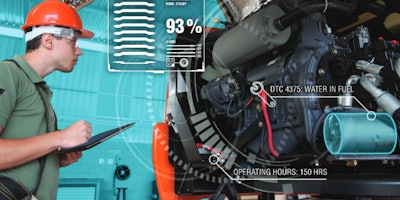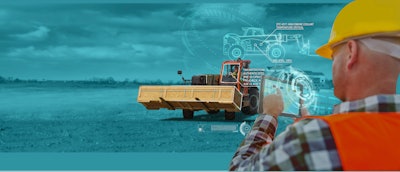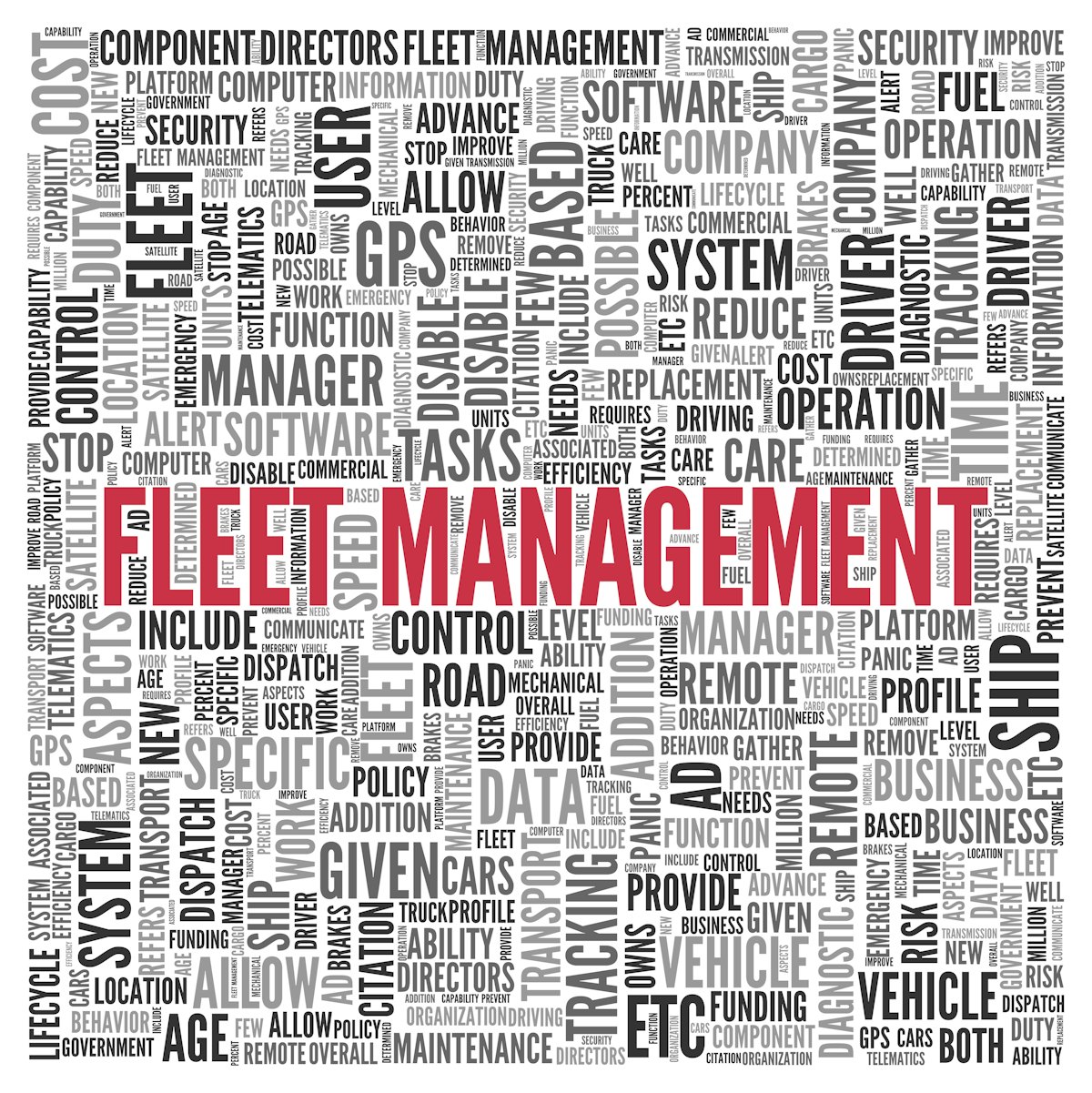Managing inventory and fleet efficiently has long been a challenge for rental stores. Between managing dozens to thousands of machines, servicing customer needs and maintaining uptime, how can you keep track of everything without letting inefficiencies erode the bottom line?
Enter the Internet of Things (IoT) — a transformative technology providing rental businesses unprecedented visibility and control over their inventory and fleet. While telematics has long helped you monitor engine hours or GPS location, modern IoT platforms go further, offering a centralized, interconnected view of every machine, attachment and asset in your rental store’s inventory.
From Telematics to Full IoT
Telematics systems paved the way for digital fleet management, but IoT expands that. Where telematics offered fragmented data from individual machines or OEM platforms, IoT provides a unified infrastructure — streamlining access to critical information, reducing human error and increasing productivity.
Rental stores that integrate IoT into their daily operations will see many benefits: Real-time asset tracking, advanced analytics and the ability to monitor major equipment, as well as smaller models. The shift is redefining what it means to “manage” a fleet.
One of the most immediate advantages IoT brings is centralized visibility. Traditionally, rental yards have relied on paper logs, phone calls or siloed dashboards to determine the location of equipment, its condition and when it’s due for service. Today’s IoT platforms can change that.
This consolidation eliminates the time-wasting search through multiple platforms or even the yard itself. Instead of calling different departments or walking the lot to locate an asset, a rental coordinator can log in to a dashboard and find the exact GPS location, usage statistics and even the maintenance status of any item.
This kind of transparency can empower your rental house to make decisions more efficiently, to respond quickly to customer needs and to improve overall asset utilization.
Inventory Control Extends Beyond the Machine
IoT goes beyond machine management. With sensor technology advancing and becoming more affordable, even smaller tools and non-powered accessories are now being tracked by the manufacturer. This is especially valuable in rental environments where attachments like buckets, forks or augers can be misplaced or underutilized.
Your rental store can maintain accountability over its full inventory by tagging rental assets with IoT-enabled trackers. You can track check-ins and check-outs, monitor usage and ensure every item is returned in working condition. The ability to locate a $500 attachment as easily as a $50,000 machine brings a new level of efficiency and peace of mind.
When equipment is off-site with a customer, real-time data helps make sure your rental equipment is as contracted. Overuse, misuse or failure to return the correct asset can be caught and addressed early, protecting your renter and rental business.
 JLG Industries Inc.
JLG Industries Inc.
Maintenance Made Smarter
IoT technology is also streamlining preventive maintenance. In traditional settings, maintenance schedules are often based on estimated usage or fixed intervals, leading to unnecessary downtime or missed service opportunities. With IoT, service intervals are based on actual machine usage and conditions.
Automated alerts through IoT can notify service teams when a machine hits a certain number of hours or when specific components show early signs of wear. This enables just-in-time maintenance, reducing unexpected failures and extending equipment lifespan. Moreover, your service teams can plan more efficiently, ordering parts ahead of time or bundling work across multiple assets.
IoT data also supports better warranty management. With accurate logs of usage and service events, your rental business can ensure compliance with warranty terms and negotiate more effectively with manufacturers in the event of issues.
Billing Efficiencies Reduce Costs, Increase Revenue
Every time you save time and capture dollars that used to slip through the cracks, you’re improving your business in a way that compounds over time.
One of the often-overlooked benefits of IoT in the rental industry is its ability to streamline and strengthen the billing process. For years, rental companies have relied on manual processes or customer-reported usage to determine how long equipment was used on the job. This approach is inefficient and leaves room for lost revenue, disputes and administrative errors.
With IoT, billing becomes more accurate, automatic and defensible.
Usage data, like engine hours, machine location and operating pattern, is captured in real time. This allows rental stores to bill customers precisely for the time equipment was in use, rather than relying on estimates or flat-rate assumptions. It also enables companies to catch overuse or extended rentals that might have gone unnoticed until the machine returned.
With IoT, your rental stories no longer have to bill on assumptions. You can bill on actuals. And that can significantly increase revenue capture, especially for high-utilization fleets.
For example, IoT systems will soon allow for geofencing and remote access control, adding another layer of operational efficiency and security. When these features are introduced, equipment owners and users will be set up and receive alerts through the fleet management platform, notifying them immediately if a machine is moved without authorization or starts outside of business hours. This proactive approach minimizes risk and ensures better compliance across the board.
In cases where equipment is returned late or has clearly been used beyond the rental agreement, the IoT system provides concrete evidence. This reduces friction with customers and helps back up additional charges or penalties. Similarly, if a customer claims underuse, the store can verify the machine’s runtime and location history to resolve the issue fairly.
 The JLG ClearSky Smart Fleet system, as an example, provides asset location in a unified view, giving rental managers immediate access to fleet data.JLG Industries Inc.
The JLG ClearSky Smart Fleet system, as an example, provides asset location in a unified view, giving rental managers immediate access to fleet data.JLG Industries Inc.
Automated usage logs also a simpler way to offer tiered billing models or flexible rental terms, charging by the hour, day or week based on real-world usage. This flexibility opens the door to new customer segments and more customized pricing strategies.
Finally, IoT helps reduce billing cycle time. With automated data flowing directly into rental management systems, invoices can be generated efficiently and with greater accuracy. This improves cash flow, minimizes errors and reduces the burden on back-office teams.
These efficiencies can make a significant difference in a competitive market with tight margins. Accurate tracking reduces equipment loss and theft. Better maintenance reduces unplanned downtime. More efficient routing and scheduling cut operational costs. Every time you save time and capture dollars that used to slip through the cracks, you’re improving your business in a way that compounds over time.
Additionally, your rental business can create new revenue streams with IoT by offering data-driven services to your customers. Usage reports, jobsite efficiency stats and alerts can be bundled into packages, providing added value and deeper engagement.
Training & Adoption Get Your Team on Board
As with any technology, the human element is key. Successful IoT implementation relies on training teams and making them comfortable with new tools. Fortunately, modern IoT platforms are increasingly user-friendly, requiring minimal training time and offering intuitive interfaces.
Your rental team can often quickly embrace the change once you see the time savings and reduced stress. Instead of chasing down equipment or relying on guesswork, you can focus on delivering excellent customer service and optimizing operations.
By reducing reliance on manual processes and siloed systems, IoT platforms free up your personnel to focus on higher-value tasks. Fleet managers become strategic planners. Field technicians become proactive problem solvers. Everyone benefits from having better data at their fingertips.
Planning for the Future: Scalability & Innovation with IoT
By organizing and managing inventory and fleet at your rental store, you’ll keep up with the times and get ahead.
As IoT continues to evolve to revolutionize the equipment rental industry, the capabilities for rental businesses like yours will only grow. Emerging technologies like predictive analytics, AI-driven diagnostics and integration with ERP systems are already being explored and adopted. These advancements will allow rental houses to plan further ahead, manage risk more effectively and offer even more tailored services.
IoT will provide a critical infrastructure backbone if your rental business is looking to scale or expand into new markets. Whether adding more equipment types, entering new regions, or growing your customer base, a centralized IoT platform ensures consistency and clarity across your operations. The ability to track fleet health, monitor trends, and optimize asset allocation on a granular level means companies can grow smarter, not just bigger.
What once required guesswork, paperwork, and constant communication now runs on real-time data, automated insights, and centralized control. By organizing and managing inventory and fleet at your rental store, you’ll keep up with the times and get ahead. Whether you’re managing five machines or five thousand, IoT can provide a smart, efficient way to run your business.
View the original article and our Inspiration here


Leave a Reply